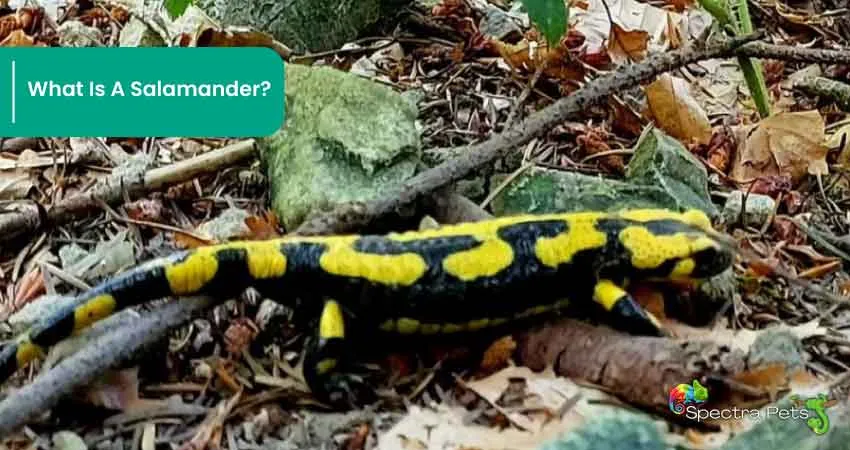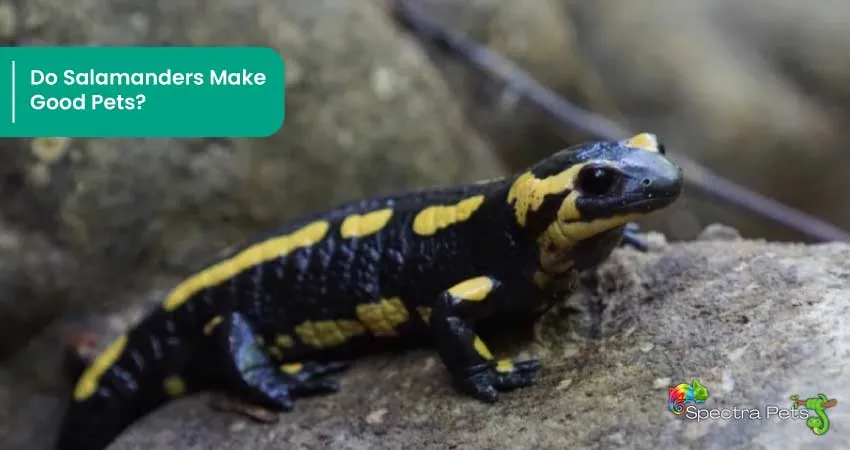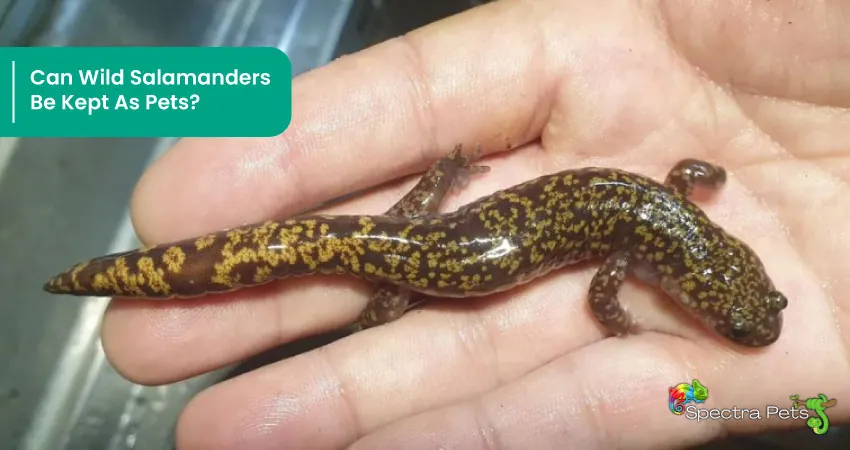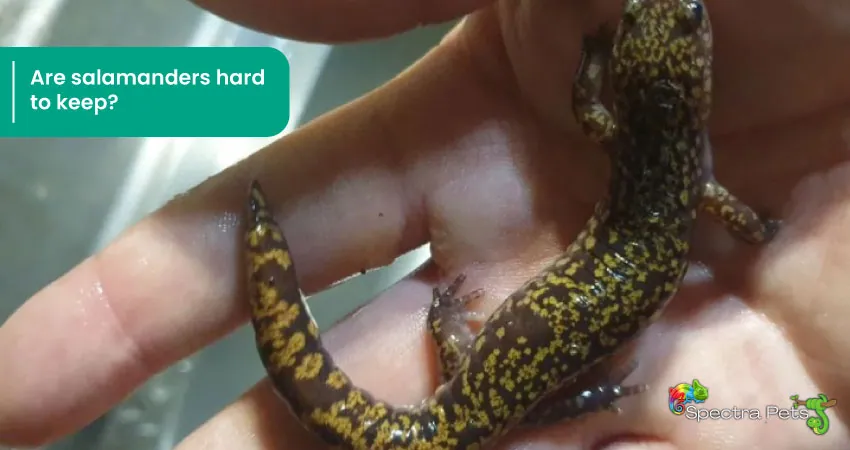If you’ve been looking for a captivating new pet to add some excitement and color to your home, then why not consider the delightful salamander? That’s right – these amazing amphibians make great pets – if you are up for providing them with the environment and care that they need.
From bright little creatures with beautiful markings to larger species which can grow up to 30cm long, there is a salamander out there to suit everybody. Moreover, these unique plus exotic creatures live for about 5-10 years. Now, keep reading as we explore other fascinating things about Salamanders and what it takes to be an ideal owner of this quirky but lovable creature.
What Is A Salamander?

Before you choose to keep a salamander as a pet, take a moment to learn some interesting facts about this animal.
Salamanders, which resemble lizards, are considered to be members of the amphibia class. These amphibians have moist skin, are quadrupeds, and usually have no more than four toes on each of their feet. They inhabit damp areas near water sources. Their biology is closely related to that of frogs, which is why taking care of them is quite similar to taking care of frogs.
Do Salamanders Make Good Pets?

Well, as I stated earlier, salamanders are generally considered excellent pets. However, in order to determine whether they would be good pets for you, you need to take into account several things.
It is indeed true that some salamander species are much harder to keep than others. This is because individual needs and personalities vary widely across different species. Also, despite having lizard-like appearances, salamanders are amphibians, unlike lizards, which belong to the class Reptilia.
However, they are creatures that, if taken care of properly, can have a really long lifespan. As well as being exotic animals, they aren’t commonly found in houses. They are unique in terms of coloration and appearance, which is very appealing. These amphibians are also well-behaved and introverted, meaning they will mostly be by themselves.
If you are a person that loves to have interactions with your pet, then a salamander may not be the right choice for you. These amphibians are not very interactive, and you shouldn’t do so either because many different salamander species are poisonous.
Salamanders secrete toxins from their skin as they are poisonous to touch, which, if somehow ingested, can cause severe illness and even potentially lead to death. This makes these creatures extremely delicate to handle.
On top of that, salamanders have skins that have strong absorbent properties. If these animals are touched by a human, they will readily absorb any chemicals from the human. And this could seriously harm its health.
Even though these amphibians are not very interactive, they have a unique pattern of behavior that can be very fascinating to watch. This includes climbing, swimming, and hiding. Therefore, you must give them access to places where they can climb, swim, and hide in the habitat you are creating for them.
If you can get by all these things mentioned above, then sure, a salamander will be a great pet for you.
Can Wild Salamanders Be Kept As Pets?

Now, you may wonder whether you can keep wild salamanders as pets. To be honest, it can be quite a hassle to keep wild salamanders as pets.
First of all, even if you are aware of their needs, removing them from the wild can impact the ecosystem. Depending on their environment, salamanders are predators that can consume a wide range of animals, including earthworms, crayfish, fish, snails, slugs, and mice. When predators are eliminated from the environment, both prey and predatory species may become out of balance.
Because of this, a large number of states in the U.S. have outlawed capturing wild salamanders. In some states, even the ownership of captive-bred salamanders has been banned!
The importation and exportation of over 200 different species of salamanders have been legally ruled out in these states as well. This is due to the catastrophic effects that both wild catching and releasing non-native species into the wild after being kept as pets can have on the environment.
Given that these strict laws are in place, you should not attempt to capture any wild salamanders unless you are granted a license to do so. Additionally, you should not release any captive-bred animals to the wild either.
Are salamanders hard to keep? How do you keep a salamander alive as a pet?

So, let’s talk about the difficulty of owning a salamander.
All salamanders have their own preferences for the environment, what they would eat, and how they must be handled. If you manage to meet all these criteria, then keeping a salamander is not really difficult.
Now then, let’s learn more about their needs:
Environmental Needs
In order to successfully keep your salamanders alive in captivity, you must ensure that the tank you put them in mimics their natural habitat.
Salamanders are cold blooded amphibians that require both land and water to be at their best. There are some species, such as axolotls, that are fully aquatic. Therefore, you need a tank setup that provides a semi aquatic (or, in the case of aquatic salamanders, an aquatic) environment. On top of that, you must make sure that your tank is not too wet, as salamanders are quite prone to various infections.
Additionally, different salamanders require different temperatures. You need to do some extensive research on the specific species you’re considering in order to understand its exact needs. Placing a thermometer inside the tank can be quite helpful, as it will allow you to easily monitor the internal temperatures.
They consume a lot of food and produce a lot of waste, so the tank needs to be cleaned frequently. In the absence of a regular cleaning schedule, this can lead to the development and proliferation of odors and bacteria. Insanity and disease may come if this situation spirals out of control.
Every week, you ought to perform a quick spot clean in which you swap out the old substrate for a new one and remove the dirt. Additionally, you must wash the terrarium every two to three months with warm water and mild soap. Disinfectants and other potent cleaning agents must not be used because they risk damaging and endangering the health of your salamander.
Feeding The Salamanders
In addition to providing a suitable environment for your salamander, you must also feed it properly for it to maintain good health.
Salamanders are carnivores that love to feed on various insects, such as beetles and crickets, and worms, such as mealworms and earthworms. These amphibians love live food that moves around, so it is best to provide them with that. This will contribute to the mimicking of their natural habitat.
How often they should be fed depends again on their species and their age. Typically, you have to feed an adult salamander every 1-3 days. Salamanders should only be provided with food during the night, as they are nocturnal creatures.
Care And Handling
As I have already mentioned, salamanders are not to be touched or held directly. You should do this only when it is absolutely necessary. To avoid their delicate skin absorbing the natural oil and salt from your hands, it is also a good idea to wear proper gloves. If you don’t, your pet might develop infections and skin problems.
You must immediately wash your hands thoroughly after handling your salamander with bare hands. This will eliminate the possibility of ingesting the poison, which can be dangerous, especially for young children who are more likely to put their hands in their mouths and consume the toxins.
The best thing you can do is observe your salamander from a distance, and if you must handle it, use gloves or a fishnet, or other appropriate tools.
Now that you know more about how to keep a salamander as a pet, you might want to know what kinds of salamanders are best suited for a home environment. Let’s have a look, shall we?
What Kind Of Salamanders Can You Have As Pets? How Much Do Salamanders Cost?
Among the numerous different species of salamanders, there are many that can easily be kept in captivity. Here is a table containing the names of these salamanders, along with their scientific names, lifespans, and estimated prices:
| Name | Scientific Name | Lifespan | Estimated Price |
| Axolotl | Ambystoma mexicanum | 10-15 years | $50-$70 |
| Tiger Salamander | Ambystoma tigrinum | 10-20 years | $40-$50 |
| European Black Salamander | Salamandra atra | 10 years | $260-$300 |
| Fire Salamander | Salamandra salamandra | 6-14 years | $25-$50 |
| Marbled Salamander | Ambystoma opacum | 4-10 years | $75-$85 |
| Slimy Salamander | Plethodon glutinosus | 5-6 years | $15-$20 |
| Spotted Salamander | Ambystoma maculatum | 28-20 years | $15-$30 |
| Two-lined Salamander | Eurycea bislineata | 8 years | $35-$50 |
| Zigzag Salamander | Plethodon dorsalis | 10-15 years | $25-$35 |
| Dusky Salamander | Desmognathus fuscus | 10-15 years | $10-$25 |
| Eastern Newt | Notophthalmus viridescens | 12-15 years | $20-$30 |
| Fire Belly Newt | Cynops pyrrhogaster | 10-25 years | $20-$35 |
From this chart, you can easily see that the price of the animal itself (besides the European Black Salamander) is rather low. However, there is also the shipping cost to be added on top of that. Afterwards, there are other regular costs, such as the tank setup, food, and veterinary costs.
Frequently Asked Questions (FAQs)
Do Salamanders Recognize Their Owners?
Salamanders are animals that you usually need to keep your hands off. Since you will not be interacting much with your salamander, it is highly unlikely that they will recognize you.
But some salamander species, such as the fire salamander and the tiger salamander, are known to recognize their owners and feed off of their hands.
Do Salamanders Bite?
These amphibians are usually quite timid by nature. They can, however, bite, although they don’t seem to do so very often. It can happen during feeding in most cases, where the animal might mistakenly think of your hand as food.
If you get bitten, look for signs of infection and visit a doctor, since salamanders are known to carry toxins.
Can You Hold Pet Salamanders?
Because of their complex, moist skin, salamanders are extremely delicate to handle. Additionally, they secrete various toxins that can be harmful to humans.
This is why it is not recommended to hold salamanders unless it’s absolutely necessary, and only hold them with a pair of gloves on your hands.
Can You Keep A Marbled Salamander As A Pet?
Marbled salamanders are considered to be pets that are at the beginner level. These amphibians can live up to 8 years if taken care of properly, and it is quite easy to do so.
Can You Have A Blue Spotted Salamander As A Pet?
Blue spotted salamanders are much rarer to find. Therefore, there is not really much known about them. However, there are reports of someone being able to successfully keep these salamanders in captivity for at least 2 months.
Can You Have A Pet Fire Salamander?
Fire salamanders are another subspecies of salamanders that are low cost and low maintenance pets. Therefore, it is really easy to keep them as pets.
Can You Have Tiger Salamanders As Pets?
Tiger salamanders are also very popular as small pets amongst enthusiasts. These amphibians are quite easy to take care of and have a decent lifespan.
Can You Have A Giant Salamander As A Pet?
You should absolutely not attempt to keep a giant salamander as a pet. Each individual matters for the survival of the species because most are threatened to some extent. Keeping these amphibians as pets is typically against the law.
Can You Keep A Salamander In A Fish Tank?
Well, most salamanders are semi-aquatic creatures, meaning that they require both water and land. However, you can also manage to make some space out of the water in a fish tank to provide some dry land for your salamander.
Alternatively, you can opt for a fully aquatic species, such as an axolotl.
Finishing Up
Although salamanders make for fun and exotic pets, it’s important to do your research before you bring one home. You’ll need to find a species that is compatible with your lifestyle, as well as set up the proper habitat to keep your new pet healthy and happy.
Salamanders are fascinating creatures, and if you’re prepared to provide them with the care they need, they can make great additions to your family. Remember, if you’re up for the challenge, a salamander can make a unique and rewarding pet.
